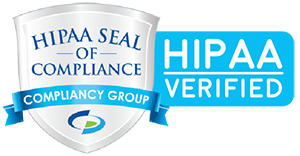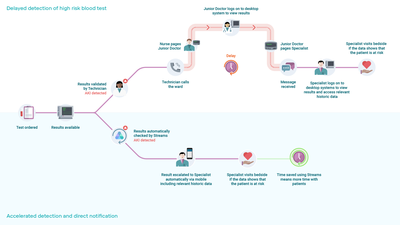History of Microservices -
A workshop of software architects held near Venice in May 2011 used the term "
microservice" to describe what the participants saw as a common architectural style that many of them had been recently exploring.In May 2012, the same group decided on "microservices" as the most appropriate name. James Lewis presented some of those ideas as a case study in March 2012 at 33rd Degree in Kraków in Micro services - Java, the Unix Way as did Fred George about the same time. Adrian Cockcroft, former director for the Cloud Systems at Netflix, described this approach as "fine grained SOA", pioneered the style at web scale, as did many of the others mentioned in this article - Joe Walnes, Dan North, Evan Bottcher and Graham Tackley. <Source :
Wikipedia>
Accepted Definition of Microservices -
Microservices are a software development technique - a variant of the service-oriented architecture (SOA) structural style— that arranges an application as a collection of loosely coupled services. In a microservices architecture, services are fine-grained and the protocols are lightweight.
Database design for Microservices
The main idea behind microservices architecture is that some types of
applications become easier to build and maintain when they are broken
down into smaller, composable pieces which work together. The main benefit of the microservices architecture
is that it improves agility and reduced development time.When you correctly decompose a system into microservices, you can
develop and deploy each microservice independently and in parallel
with the other services.
In order to be able to independently develop
microservices , they must be loosely coupled. Each microservice’s
persistent data must be private to that service and only accessible via
it’s API . If two or more microservices were to share persistent
data then you need to carefully coordinate changes to the data’s schema,
which would slow down development.
There are a few different ways to keep a service’s persistent data
private. You do not need to provision a database server for each
service. For example, if you are using a relational database then the
options are:
- Private-tables-per-service – each service owns a set of tables that must only be accessed by that service
- Schema-per-service – each service has a database schema that’s private to that service
- Database-server-per-service – each service has it’s own database server.
Private-tables-per-service and schema-per-service have the lowest
overhead. Using a schema per service is ideal since it makes
ownership clearer. For some applications, it might make sense for
database intensive services to have their own database server.
It is a good idea to create barriers that enforce this modularity.
You could, for example, assign a different database user id to each
service and use a database access control mechanism.
Without some kind of barrier to enforce encapsulation, developers
will always be tempted to bypass a service’s API and access it’s data
directly.It might also make sense to have a polyglot persistence
architecture. For each service you choose the type of database that is
best suited to that service’s requirements. For example, a service that
does text searches could use ElasticSearch. A service that manipulates a
social graph could use Neo4j. It might not make sense to use a
relational database for every service.
There are some downsides to keeping a service’s persistent data
private. Most notably, it can be challenging to implement business
transactions that update data owned by multiple services. Rather than
using distributed transaction, you typically must use an eventually consistent, event-driven approach to maintain database consistency.
Another problem, is that it is difficult to implement some queries
because you can’t do database joins across the data owned by multiple
services. Sometimes, you can join the data within a service. In other
situations, you will need to use Command Query Responsibility Segregation (CQRS) and maintain denormalizes views.
Another challenge is that services sometimes need to share data. For
example, let’s imagine that several services need access to user
profile data. One option is to encapsulate the user profile data with a
service, that’s then called by other services. Another option is to use
an event-driven mechanism to replicate data to each service that needs
it.
In summary, it is important that each service’s persistent data is
private. There are, however, a few different ways to accomplish this
such as a schema-per-service. Some applications benefit from a polyglot
persistence architecture that uses a mixture of database types. A
downside of not sharing databases is that maintaining data consistency
and implementing queries is more challenging.




















